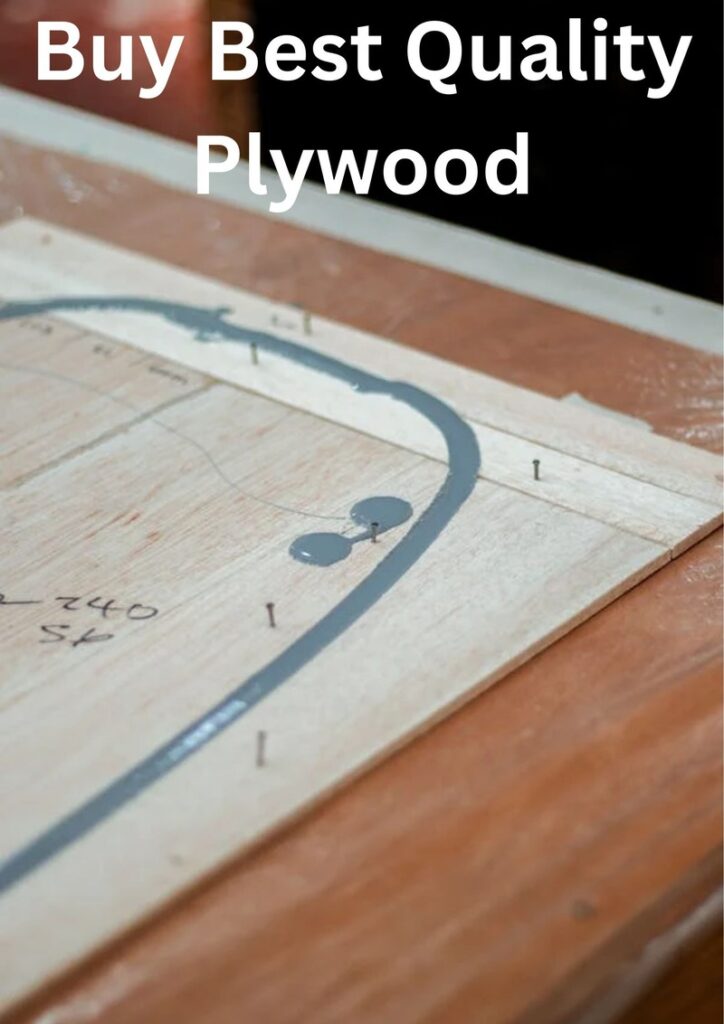When it comes to interior construction and woodworking projects, choosing the right plywood is crucial. Plywood is a versatile and popular material used in various applications, from furniture making to wall paneling. But with so many options available, how do you determine which plywood is best for your interior projects? This comprehensive guide will explore the different types of plywood suitable for interior use, their characteristics, and the factors to consider when making your selection.
Understanding Plywood Basics
Before diving into the specific types of plywood best suited for interior use, let’s briefly review what plywood is and how it’s made.
What is Plywood?
Plywood is an engineered wood product made by gluing together multiple thin layers (called plies or veneers) of wood. These layers are typically arranged with their wood grain running perpendicular to each other, which gives plywood its strength and stability.
How Plywood is Manufactured
The manufacturing process of plywood involves several steps:
- Log selection and preparation
- Peeling or slicing the logs into thin veneers
- Drying the veneers
- Applying adhesive between layers
- Pressing the layers together under heat and pressure
- Trimming and sanding the finished panels
This process results in a strong, dimensional stable material that resists warping, cracking, and shrinking.
Types of Plywood Suitable for Interior Use
When it comes to interior applications, several types of plywood stand out as excellent choices. Let’s explore each of these options in detail.
1. Hardwood Plywood
Hardwood plywood is a premium option for interior use, known for its strength, durability, and attractive appearance.
Characteristics:
- Made with hardwood face veneers (e.g., oak, maple, birch)
- High-quality core layers (often softwood or composite)
- Excellent strength-to-weight ratio
- Suitable for fine woodworking and furniture
Best uses:
- Cabinetry
- Furniture making
- High-end wall paneling
- Decorative shelving
2. Baltic Birch Plywood
Baltic birch plywood is a high-quality option known for its strength and attractive edge appearance.
Characteristics:
- Made entirely of birch veneers
- Uniform core with minimal voids
- High number of plies for its thickness
- Excellent screw-holding ability
Best uses:
- Drawer boxes
- Cabinet components
- Furniture making
- Decorative items with exposed edges
3. Marine-Grade Plywood
While primarily designed for exterior use, marine-grade plywood is an excellent choice for interior applications where moisture resistance is crucial.
Characteristics:
- Made with waterproof glue
- High-quality face and core veneers
- Excellent resistance to delamination
- Durable and long-lasting
Best uses:
- Bathroom cabinetry
- Kitchen countertops
- Laundry room shelving
- Basement finishing projects
4. Medium Density Overlay (MDO) Plywood
MDO plywood features a smooth, paintable surface, making it ideal for projects requiring a flawless finish.
Characteristics:
- Resin-impregnated fiber overlay on one or both faces
- Smooth, uniform surface
- Excellent paint adhesion
- Resistant to weathering and wear
Best uses:
- Painted cabinetry
- Interior signage
- Smooth wall paneling
- Shelving units
5. Medium Density Fiberboard (MDF) Core Plywood
MDF core plywood combines the stability of MDF with the benefits of plywood face veneers.
Characteristics:
- MDF core with hardwood face veneers
- Very stable and flat
- Excellent for machining and edge finishing
- Smooth surface ideal for veneering or painting
Best uses:
- High-end cabinetry
- Furniture components
- Interior doors
- Decorative wall panels
Factors to Consider When Choosing Interior Plywood
When selecting plywood for your interior projects, consider the following factors:
- Appearance: If the plywood will be visible, choose a type with an attractive face veneer or one that takes paint well.
- Strength: Consider the load-bearing requirements of your project and choose a plywood grade accordingly.
- Moisture Resistance: For areas prone to humidity or potential water exposure, opt for moisture-resistant options like marine-grade plywood.
- Budget: Balance quality with cost, considering the long-term value of higher-grade plywoods.
- Project Requirements: Consider any specific needs, such as screw-holding ability, paintability, or edge appearance.
- Environmental Concerns: Look for plywood certified by organizations like the Forest Stewardship Council (FSC) if sustainability is a priority.
Advantages of Plywood for Interior Use
Plywood offers several benefits that make it an excellent choice for interior applications:
- Dimensional Stability: Plywood is less prone to warping, shrinking, or expanding compared to solid wood.
- Strength: The cross-grain construction provides excellent strength-to-weight ratio.
- Versatility: Plywood can be used in a wide range of applications, from structural to decorative.
- Cost-Effective: Plywood often provides a more economical alternative to solid wood for large surfaces.
- Ease of Installation: Plywood sheets are relatively easy to work with and install.
- Variety of Options: With various wood species and grades available, there’s a plywood type for every project and budget.
- Environmentally Friendly: Many plywood options are made from sustainable sources and are recyclable.
Cost of Plywood: A Comparative Analysis
The cost of plywood can vary significantly based on type, grade, and thickness. Here’s a general comparison of plywood costs for interior use:
Plywood TypeRelative CostPrice Range (4'x8' sheet)Hardwood PlywoodHigh$45 - $150+Baltic Birch PlywoodMedium-High$50 - $100Marine-Grade PlywoodHigh$70 - $150MDO PlywoodMedium$40 - $80MDF Core PlywoodMedium$35 - $75
Note: Prices can vary based on location, supplier, and current market conditions. Always check with local suppliers for the most accurate pricing.
Grading Systems for Interior Plywood
Understanding plywood grades can help you choose the right product for your project. Here’s a simplified overview of common grading systems:
Hardwood Plywood Grades (Face Veneer)
- A: Smooth, paintable, minimal defects
- B: Solid surface, some minor defects allowed
- C: Tight knots and color variations acceptable
- D: Larger knots, splits, and color variations allowed
Softwood Plywood Grades
- A-A, A-B, A-C, B-B, B-C, C-C: First letter indicates face veneer grade, second letter indicates back veneer grade
- X: Exposure durability rating (for exterior use)
Always consult the specific grading system used by the manufacturer, as there can be variations.
Tips for Working with Interior Plywood
To get the best results when working with plywood for interior projects, consider these tips:
- Use sharp tools: Plywood can be prone to splintering, so use sharp saw blades and drill bits.
- Support the cut: When cutting plywood, support the sheet close to the cut line to minimize tear-out.
- Sand edges: Carefully sand the edges of cut plywood to remove splinters and achieve a smooth finish.
- Pre-drill holes: To prevent splitting, pre-drill holes before driving screws, especially near the edges.
- Seal edges: For moisture-prone areas, seal the edges of plywood with paint or edge banding to prevent water absorption.
- Acclimate the plywood: Allow the plywood to acclimate to the room’s temperature and humidity for a few days before installation.
- Use appropriate fasteners: Choose the right type and length of fasteners for your specific plywood and application.
Conclusion
Choosing the best plywood for interior use depends on various factors, including the specific application, budget, and desired appearance. Hardwood plywood and Baltic birch are excellent choices for high-end cabinetry and furniture, while marine-grade plywood is ideal for moisture-prone areas. MDO and MDF core plywoods offer smooth surfaces perfect for painting or veneering.
Consider the advantages of plywood, such as its dimensional stability, strength, and versatility, when planning your interior projects. While the cost of plywood can vary, investing in higher-quality options often pays off in terms of durability and appearance.
By understanding the different types of plywood available, their characteristics, and the factors to consider, you can make an informed decision that will result in beautiful, long-lasting interior projects.
Q: Is plywood good for interior walls?
A: Yes, plywood can be an excellent choice for interior walls. It provides a stable surface for paint or wallpaper and can add structural strength to the wall.
Q: What thickness of plywood is best for interior use?
A: The ideal thickness depends on the application. For wall paneling, 1/4″ to 3/8″ is often sufficient. For cabinetry and furniture, 1/2″ to 3/4″ is more common.
Q: Can I use exterior plywood for interior projects?
A: While exterior plywood can be used indoors, it’s often more expensive and may have a rougher surface. Interior-grade plywood is usually a better choice unless moisture resistance is a priority.
Q: How do I prevent my plywood from warping?
A: Store plywood flat in a dry area, allow it to acclimate before use, and seal all surfaces (including edges) when using in humid environments.
Q: Is plywood eco-friendly?
A: Many plywood options are made from sustainably managed forests. Look for certifications like FSC for more environmentally friendly choices.
Q: Can plywood be stained or should it only be painted?
A: High-grade hardwood plywoods can be stained beautifully. Lower grades or those with surface defects are better suited for painting.
Q: How does the cost of plywood compare to solid wood for interior projects?
A: Plywood is generally more cost-effective than solid wood for large surfaces, offering similar appearance at a lower price point.
Q: What’s the difference between veneer core and MDF core plywood?
A: Veneer core plywood has a core made of wood layers, while MDF core uses medium-density fiberboard. MDF core tends to be more stable and smoother but may not hold screws as well.
By considering these factors and understanding the various types of plywood available, you can select the best option for your interior projects, balancing quality, appearance, and cost to achieve outstanding results.
Stay tuned for more news and updates on Infinite Insight Hub!



